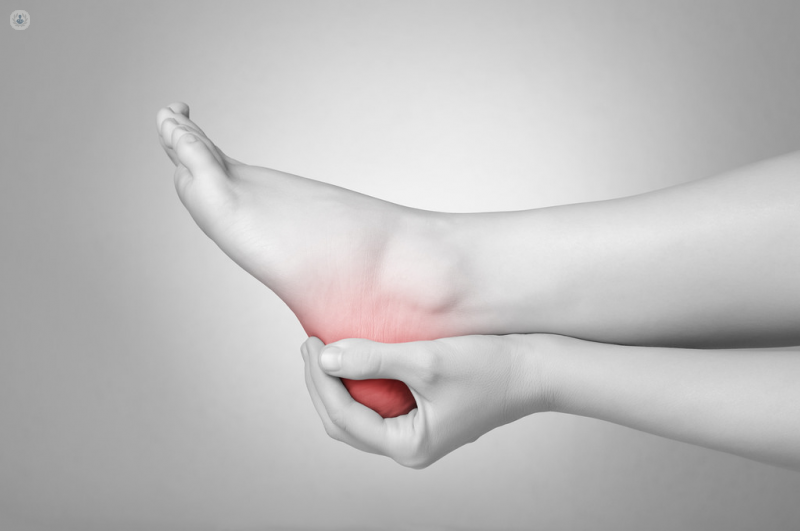What causes plantar fasciitis?
Written in association with:Many things can cause pain around the foot and ankle. One common problem responsible for pain in the heel and the sole of the foot is inflammation of the thick band of fibrous tissue on the bottom of the foot – the plantar fascia. Expert orthopaedic surgeon Mr Rohit Madhav explains plantar fasciitis.

Often referred to as “policeman’s heel”, plantar fasciitis accounts for around 80% of cases of heel pain. Despite its moniker, it not only affects those with active lifestyles, such as police officers and military personnel, but also patients with a more sedentary lifestyle.
Other key statistics:
- 1 in 10 people will suffer from plantar fasciitis at one point or another during their lives.
- It is more common in women than in men.
- It most commonly affects people between 40 and 60 years of age.
Plantar fasciitis causes
The exact cause of plantar fasciitis is not well understood. The pain is caused by inflammation and thickening of the plantar fascia, which can crop up anywhere along the length of the ligament from where it inserts into the heel to where it inserts at the base of the toes. Unfortunately, in 85% of cases, the cause of this inflammation is unclear. Repetitive minor injuries of the plantar fascia are thought to be involved.
Risk factors for plantar fasciitis include:
- Ankle stiffness in dorsiflexion
- Obesity
- Prolonged weight-bearing activities
- Standing for long periods
Changes in athletic training, daily routine, footwear, or terrain may also lead to plantar fascia trouble.
It is also associated with inflammatory arthritidies and diabetes mellitus, and in such cases can be chronic and resistant to treatment.
Diagnosing plantar fasciitis
Classic signs of plantar fasciitis include pain and stiffness after rest, such as when getting out of bed in the morning or after the patient has been sitting down a while. It usually eases quickly after several steps, but will return during long periods of standing or walking, often getting progressively worse.
When a patient comes to a doctor with heel pain, they will first take a medical history and conduct a clinical examination. This may involve palpation of the plantar fascia o full stretch, and if fasciitis is present, there will be tenderness, with the most intense pain occurring at the heel.
Further tests may help in the diagnosis. X-rays are usually inconclusive, but may show the presence of heel spurs (bone protrusions caused by calcium deposits). MRI and ultrasound scans often show that the plantar fascia is thickened or inflamed, and/or the presence of calcaneal bone oedema.
Dealing with plantar fasciitis
Typically, treatment initially involves taking anti-inflammatories for 2-3 weeks, while avoiding weight-bearing activities and exercise, wearing 1 cm heel lifts in one’s shoes, massage, and stretching exercises 2-3 times a day. Other options include:
- Customised foot-ankle splints
- Steroid injections
- Platelet-rich plasma (PRP) injections
- Extracorporeal shockwave therapy
If all else fails and pain persists for over a year, surgical release of the plantar fascia may be recommended; however, surgery is not always a success.
In general, however, patients with plantar fasciitis recover completely within 12 months.
Learn more about the work of a foot and ankle specialist!
If you would like to book a consultation with Mr Madhav, you can do so today via his Top Doctors profile.
References:
Plantar fasciitis, Clinical Knowledge summaries. February 2009
Extra corporeal shockwave therapy for the fracture pains and fasciitis. NICE Interventional procedure guidelines, August 2009
Plantar fascial specific stretching exercises improves outcomes in a patient with chronic plantar fasciitis, Benedict F and Judith F Baumhauer. JBJS Am 2006.


